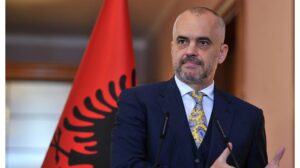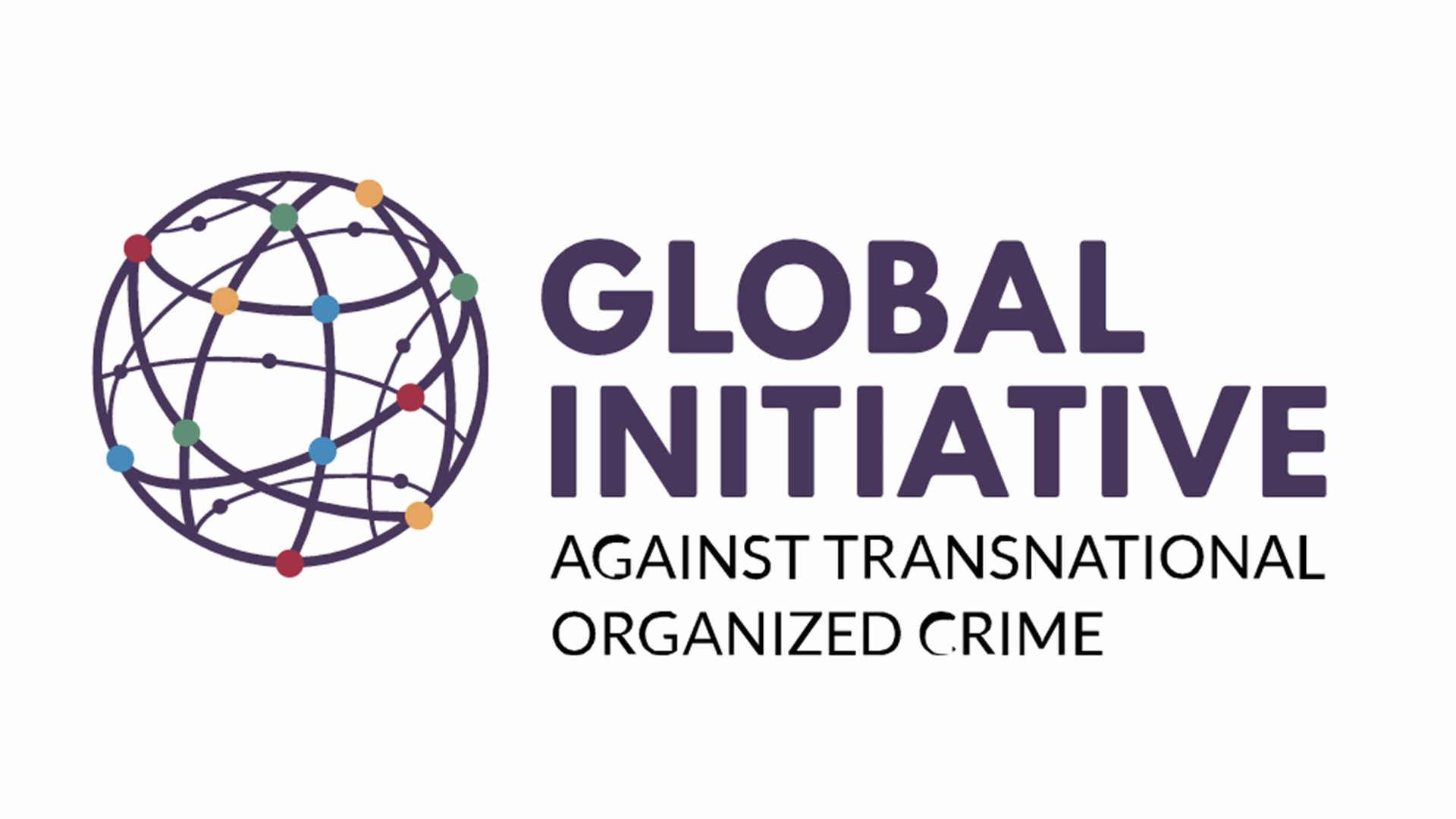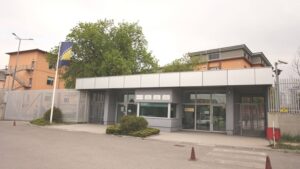
Examining the geopolitical context and recent fault lines are useful for determining the most effective support measures, including small confidence-building steps in humanitarian relief which can prevent conflict spillover into the wider region. Extra-regional actors have stood aside from the conflict, but their reticence must not be taken for granted. Conversely, the role of multilateral actors such as the UN, EU, and AU remains quite limited, despite declared conflict prevention and resolution agendas. Finding the right balance between regional IGAD and EU cooperation to hedge against a wider conflagration is a challenge for early 2021 and preparations should start without further delay.
It was not until 12 December that the first international relief convoy reached Mekelle where medical services had all but ceased to function. Although bloody street battles were avoided, UN observers spoke of ongoing violence in Tigray at the beginning of December. Thousands of government soldiers had been captured by TPLF forces and most were eventually set free again. There is no comprehensive data about civilian casualties from the fighting, as many communications lines remained cut off, while the government started to reconnect a few cities in Tigray.
Violence in Tigray can easily jump to neighboring states and trigger greater instability across the region. This would reverse the hard-won gains in democratic governance and conflict settlement that had recently turned the Horn of Africa into a beacon of hope after decades of major instability. This is evidenced by the transition in Sudan from the fundamentalist rule of Omar Al-Bashir including peace deals with major armed opposition movements in 2019, as well as by the coalition government of the two opposing factions in South Sudan. Prime Minister Abiy received the Nobel Peace Prize in 2019 for his rapprochement with Eritrea, ending a decade of ‘cold peace’ after the border war from 1998 to 2000. However, in previous decades, inter-state relations had been much more conflictual, including through a pattern of shifting alliances and supporting armed opposition movements covertly (or overtly): this followed the maxim “the enemy of my enemy is my friend” for dealing with political rivals in the region.
Related Posts
If the conflict persists, Ethiopia’s internal stability might be also affected which could compound the impact of the Tigray conflict on the wider region. In October 2019 and again in spring/summer 2020, unrest erupted in Oromia province around the greater Addis Ababa area, pointing to increased political fragility and eroding national consensus for the reform course of PM Abiy. TPLF knows how to push the right buttons in these political dynamics with the central government. Especially youth in Ethiopia are confronted with unemployment and lack of perspective and therefore susceptible to recruitment by provincial militias or militant political party elements. Although many in the Ethiopian capital welcomed the Army’s strike against TPLF, activist youth in Oromo criticized the government’s course of in Tigray. Several towns in Oromia had been under “Command Post” direct military control for weeks during the unrest. The jailed populist Oromia leader Jawar Mohammed became their mouthpiece in December, calling for a stop of the operation in Tigray.
Human security in Tigray has been precarious- an aspect that is commonly not so well known to the public in Europe and in the west since the Ethiopian famine of the 1980s. Even before the conflict, Tigray’s population had faced drought conditions and food security challenges, which were exacerbated by climate change and locust infestation across the borders in some parts of Tigray. The province also houses some 100,000 refugees from Eritrea who are sheltering in four camps including Shimelba and in major cities. Up until mid-December, UNHCR had no access to these camps where only a handful of national relief staff stayed behind, and resources were depleted. The Ethiopian Human Rights Commission confirmed a massacre of several hundred civilians in Mai-Kadra that took place on 9 November near the border of Tigray with Amhara province. Several other atrocities not yet discovered could fuel revenge killings and let the situation spiral out of control.
According to IMF forecasts, economic growth in Ethiopia stands at a mere 1.9% in 2020 and will slow further to zero in 2021, as the COVID-19 pandemic has caused additional losses in the economy. Weakened business activity in Tigray whose elites traditionally dominated many import and export businesses in Ethiopia reduces Ethiopia’s resilience further. Rapid normalization is therefore important to prevent additional violence, especially at the local community level so economic recovery can gain traction.
In Eritrea, the militarized commend economy of President Isaias Afewerki harbors regional power ambitions and provided direct backup to the Ethiopian campaign in Tigray. There were larger forced recruitment drives and vehicles requisitioned to move to the border area, according to some reports from Asmara. Former Eritrean Defense Minister Mesfin Hagos has described this cooperation in some detail, which shows a temporary alliance against a common enemy, namely TPLF. In the border war from 1998 to 2000, Ethiopia (then under TPLF leadership by PM Meles Zenawi) and Eritrea had fought major battles that cost 100,000 lives and prompted extensive deportations on both sides. In the absence of an international boundary regime and demarcation, disputed areas such as the strategic location of Badme, Irob, and Tsorona remain potential flashpoints that could be re-ignited by continued fighting in Tigray.
Eritrean troops have reportedly crossed into Tigray during the latest campaign and rounded up young deserters among Eritrean refugees. It is therefore not surprising that TPLF escalated the fighting up until 28 November with several rocket attacks against the Asmara airport area in the Eritrean capital region. Previously, TPLF had targeted airfields inside Amara province of Ethiopia such as Bahir Dar. Experts have discounted the use of armed drones from the Eritrean port of Assab in the southern Dankalia zone where the United Arab Emirates maintains airpower for the war in Yemen which is fought alongside Saudi Arabia. With Eritrea remains to keep aloof from the group of seven active IGAD Region Member States after suspending its cooperation in 2007, its actions remain to some extent unpredictable.
Ethiopia also shares a border with Somalia in the southeast of its Somali regional state at the ‚Haud‘ region which was the target of Somalia’s dictator Siad Barre in an unsuccessful military venture in 1973. Distraction and a weakened Ethiopian military footprint inside Somalia alongside AMISOM and in bilateral deployments is a risk factor. The Al-Shabaab terrorist group could make additional gains during the sensitive pre-election period in Somalia and export extremist violence more easily into Ethiopia and Kenya. According to well-informed observers, the general Ethiopian force posture has not changed dramatically but a unit in the Southwest Federal State of Somalia was disarmed as it was mainly composed of Tigrayans.
In the Horn of Africa region, Djibouti is a relative stability anchor, not least because of the five international military bases in the country and the strategic importance of the nearby Bab-el-Mandeb waterway for international shipping through the Red Sea and the Suez Canal. These bases include the largest U.S. base in Africa and the largest Chinese military base outside China, in addition to France, the former colonial power in Djibouti. Just after the end of the Ethiopia-Eritrea border war when the bilateral relations were at an absolute low, Djibouti hosted periodic meetings of the senior military in the format of a tripartite “Military Coordination Commission” (MCC) under the auspices of the UN Peacekeeping Mission (UNMEE)[2].
In view of these complex dynamics in the Horn of Africa, Ethiopia has not just advanced internal reforms but also put geopolitics and external actors more clearly into sharp focus. A new Foreign Policy Strategy was developed in 2019 and presented at Addis Ababa University in December 2019[3]. The new policy marked a departure from the TPLF conduct of foreign policy and its transactional, rather self-centered approach and balancing of alliances. An end of “bullying” the Ethiopian Embassies by the political leaders in Addis Ababa and opening up to citizen diplomacy and greater diaspora engagement were also included. Through the ‘Intergovernmental Authority on Development ‘(IGAD), the Region has launched efforts at consultations on the Red Sea and the Gulf of Aden. A dedicated IGAD Task Force was launched in early 2019 to build an informed common understanding among all continental IGAD members, littoral states, and the interested neighbors; these national consultations finished with Uganda in June 2020. It is worth noting that a complementary Egyptian Red Sea Initiative was presented at the Aswan International Forum in summer 2019 with backing from Saudi Arabia.
In the larger global strategic picture, the Red Sea ranks just behind the Persian Gulf and the Indian Ocean as one of the vital shipping routes on the choke point of Bab-el-Mandeb. Ethiopian analysts have pointed to the “securitization” of the Red Sea maritime zone (“Ethiopian Foreign Policy.” Presentation op. cit.) and the fact that their country is just 150 km away from the southern part of the Red Sea near Djibouti and Ethiopia; Ethiopia cannot be indifferent to the developments and emplacements from outside the Horn of Africa region in this zone. Due to the ongoing conflict in Yemen, the Red Sea is already experiencing more tension and naval incidents, in addition to human smuggling operations for migrants from the Horn of Africa towards the Gulf States and Europe. With Eritrea as a littoral state on the Red Sea fully embroiled in violent conflict spreading from Tigray, risks for interrupted sea traffic would grow exponentially. This could rapidly affect EU vital strategic interests and those of other Western and Asian powers who depend on global supply lines for energy security and trade flows.
Prime Minister Abdallah Hamdok of Sudan as Chair of the ‘Intergovernmental Authority on Development‘ (IGAD) rotating presidency sounded out the Ethiopian government about dialogue with TPLF leaders at an early stage in the crisis; PM Hamdok renewed his efforts on 13 December during a visit to Addis Ababa but his initiatives remained unsuccessful. On 20 December, IGAD held an Extraordinary Heads of State and Government Meeting in Djibouti; the conflict in Tigray also featured on the agenda, apart from the situation in Sudan and South Sudan as well as response to the COVID-19 pandemic (see: Communique of the 38th Extraordinary Assembly of IGAD Heads of State and Government, Djibouti 20 December 2020)[4]. In briefest terms, the meeting reaffirmed “primacy of constitutional order, stability and unity of the Federal Democratic Republic of Ethiopia” and welcomed the 29 November agreement for “unimpeded, sustained and secure access for humanitarian support” (Communique, op. cit., paras. 10 and 11).
IGAD is to some extent dependent on Ethiopia (as the IGAD Peace and Security Division located in Addis Ababa and staffed with some high-ranking Ethiopian experts and officials) but unlike any other regional state grouping in East Africa apart from the East African Economic Community (EAC), IGAD commands an array of “soft power” tools in its multi-sector work.[5] As the recent IGAD engagement on the Red Sea and Gulf of Aden dialogue series has shown, the organization is capable of addressing complex and sensitive issues. IGAD could undertake confidence-building measures that have broad acceptance across political and geographical divides.
Multilateral efforts at dispute settlement beside the AU initiative for Ethiopia and Tigray have remained uncharted. The UN Security Council was not seized of the Tigray conflict until 14 December when the humanitarian impact of the crisis was discussed (under the ‘Any Oher Business’ agenda item in the Council). The African A-3 group in the Council was not able to muster enough resolve among Security Council members to propose solutions for the conflict. This illustrated the prevailing UN political polarization and impact from the COVID-19 pandemic on decision making at the highest level in peace and international security dealing with emerging threats. Conflict prevention is among the centerpieces of the UN Secretary-Generals reform plan launched in 2017 but the UN has found it difficult to implement this goal in practice while navigating complex member state relations.
It might be possible to regularize consultations on the monitoring and impact assessment for the conflict in Northern Ethiopia through a dedicated diplomatic channel and networked meetings of senior envoys. This could be operationalized with tailored IGAD and EU secretariat support and provide common observations and points of concern for early warning which could be relayed periodically to the Ethiopian leadership. Inter-regional cross-cooperation might be the most acceptable format for sounding options in conflict resolution since individual states often have political baggage from their previous dealings with the TPLF, which could give rise to perceptions of pushing special interest[6].
IGAD neighboring states are most immediately affected by escalating violence in Tigray and together with the EU, their messaging might go a long way to convince the Ethiopian leaders that a peaceful settlement and dialogue with the TPLF leaders would be in everyone’s best interest. Conceiving small steps as confidence-building measures could be useful, clustered around arms control at a provincial level in Tigray, humanitarian relief corridors, and post-conflict reconstruction with a focus on climate adaptation as a compass for shared prosperity and stability that can speak to the aspirations of Tigrayans and the Ethiopian state.
This could pave the way for a broader national dialogue in Ethiopia ahead of the general elections scheduled for October 2021. The contours of such dialogue have already been sketched at the expert level in the U.S.; a Three-Point Plan addressing the underlying causes for conflict in Tigray offers a comprehensive road map towards redefining federal state and central government relations in Ethiopia. These steps could lead to political and institutional reforms including constitutional provisions. However, the road is still fraught with many pitfalls and possible turbulence so the immediate task would be to de-conflict with the parties at hand in Tigray and encourage them to end hostilities and focus minds on what unites Ethiopians for the future instead of what divides them.
About the author:
Matthias E. Leitner has served in international peace and security positions since 1997, mainly in UN and regional contexts across Africa, the western Balkans, and in the Middle East, with a specialization in the Horn of Africa/IGAD region. He has recently implemented an EU Emergency Trust Fund Project (IPPSHAR) with IGAD in Addis Ababa. His academic background from Bonn and Oxford Universities is in languages, history, and international law.
The views expressed in this article are the author’s own and do not necessarily reflect IFIMES official position.
Ljubljana/Washington/Berlin, 27 December 2020
Footnotes:
[1] IFIMES – International Institute for the Middle East and Balkan Studies, based in Ljubljana, Slovenia, has Special Consultative Status at ECOSOC/UN, New York, since 2018.
[2] This has not, however, allowed relations between Djibouti and Eritrea to normalize, as both states remain technically at war which had erupted over territorial claims in the 1980s. UNMEE was withdrawn in 2006 after Ethiopia refused to recognize the decision of Independent International Ethiopia- Eritrea Boundary Commission (EEBC) in 2004.
[3] „Ethiopian Foreign Policy and Sustainable Peace in the Horn of Africa. “Presentation by Dr. Markos Tekle, State Minister/ Ministry of Foreign Affairs at IPSS (December 2019).
[4] Moussa Faki Mahamat, Chairperson of the AU Commission, was in attendance but no EU representatives were present.
[5] IGAD also has a Social Development Division which deals with social policy, youth, development, and migration, as well as expertise in environment and agriculture, especially in transboundary contexts. In addition, the IGAD Mediation Support Unit is based in Djibouti at the headquarters of the organization.
[6] States with an established tradition of neutrality such as Switzerland or Austria might be able to provide secretariat support while Norway is preoccupied with South Sudan as part of the Troika and the new US administration‘s foreign policy team is just getting ready.
Napomena o autorskim pravima: Dozvoljeno preuzimanje sadržaja isključivo uz navođenje linka prema stranici našeg portala sa koje je sadržaj preuzet. Stavovi izraženi u ovom tekstu autorovi su i ne odražavaju nužno uredničku politiku The Balkantimes Press.
Copyright Notice: It is allowed to download the content only by providing a link to the page of our portal from which the content was downloaded. The views expressed in this text are those of the authors and do not necessarily reflect the editorial policies of The Balkantimes Press.






